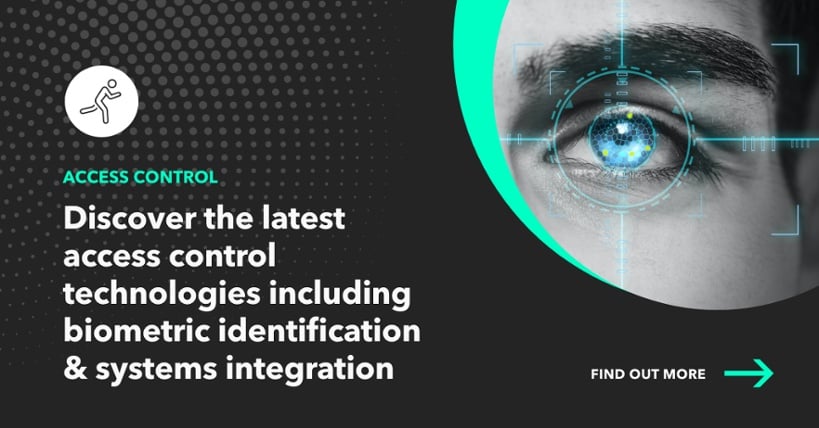Biometric access control systems use scanners to verify people’s identity through measuring certain physiological characteristics. More frequently, access control systems are using stored biometric data in our personal devices to verify identity. They are safe and convenient. However, they also only work by providing our most valuable data--which, until recently, we have been reluctant to surrender.
The pandemic and our data
In 2019, it was unimaginable that two years later we would consentingly be using an app that would broadcast to the rest of the world if we became ‘infected’. Our most intimate biometric information is being used to ‘ping’ others who, having been near us, need to shut themselves off from the rest of society.
Governments are using technology that encroaches upon our personal privacy, and, for the most part, we have supported it--60% of people who can have downloaded the NHS covid-19 app. This manifests a huge change in the public’s attitude towards personal data privacy.
What is access control?
The fundamental goal of access control is to restrict access to people in certain areas, which makes buildings more secure. Previously, people gained access to restricted areas through a key, card, password, or pin. However, these methods are easily breached. A desire for improved security as well as convenience led to the development of biometric access control.
What is biometrics access control?
A key benefit of people using their unique biometric data to gain access to areas is that it is far more difficult to copy or fake this information. Pins can be shared, keys copied, but it is slightly more difficult to access someone’s fingerprint without running the risk of a long prison stretch!
Until recently, because of our concerns about giving up our data, biometrics have only been used in high-risk environments. However, the pandemic has changed our feelings towards what our data can and should be used for. Biometric systems are, therefore, now also commonly accepted in low-risk environments.
The systems are most commonly implemented in banking, healthcare, and education. The principal elements of a biometric control system include:
- Biometric Readers
- Readers / scanners
- Door Controller
- Controls and powers all access control devices at the door
- Electronic / Wireless Locks
- Secures / locks / unlocks the door
- Control Software
- Includes security and event management, web and mobile apps, and reporting
From fingerprints to phones
While biometric systems may have become more accepted, the pandemic has rendered certain biometric technologies suboptimal. Fingerprint scanners, for example, which require direct physical contact have been linked to the spread of harmful microbial pathogens. This is clearly an area you want to avoid during a pandemic.
Also, the technology has shifted--we live in a mobile-first world. Mobile access control systems principally use a mobile phone, however they could also use a tablet or wearable to request and gain access to secured doors, gates, and networks. With these new systems, if someone wants to enter a building--and is authorised to do so--they do not have to directly enter their biometric information into a reader.
How does a mobile access system work?
The new generation of data readers are equipped with NFC / bluetooth technology. An example of one of the most common readers on the market is the Signo™ reader, which functions together with HID Mobile Access® technology. Biometric mobile phone access control works in the following way:
- A mobile device sends an open signal to the reader
- The biometric data on the mobile device verifies who the person is
- The reader sends an encrypted digital credential to the access control database
- This credential is verified
- The individual is granted access via the access control system
The four main benefits of mobile biometric access control
Hygiene
Not having to physically touch a device is more hygienic as there is a reduced risk of people spreading dangerous pathogens.
Convenience
Remembering pins, keeping spare sets of keys, forgetting your access card--these are all problems of the past. The majority of people have a mobile device they use for everything. So, using this device for access to be granted is convenient.
Efficiency
Access can be granted and annulled through the cloud. Access control providers also generally offer subscription billing, which allows organisations to scale up or down based on the needs of their business.
Security
Mobile access control systems can be used as part of integrated security systems and are a more secure way to assign access to people for certain areas within a building than traditional cards or security codes. Access is granted remotely via a cloud platform, which allows permissions to be given instantaneously and remotely through several clicks on the user’s phone.
A positive secondary effect of using mobile phones instead of a finger or iris scanner is that third-party readers no longer have to be given access to our biometric data--it is all in our phones. Advanced technology also protects the user’s data.
Benefits of implementing biometric access control
- The right people in your organisation are given access to the right places at the right times
- Safe environments are created for employees, visitors, and contractors
Conclusion
Now is a good time to install an access control system using consumer devices with in-built biometric technology. Today’s mobile-first world demands that we make systems more efficient. And people’s skepticism about using biometric data has also abated. For understandable reasons, people are also rejecting biometric systems that have to be touched. Mobile phone access control systems are hygienic, convenient, efficient, and, most importantly, provide your organisation with a higher level of security.




 Previous Blog
Previous Blog

Comments.